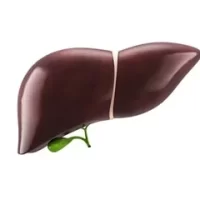Biotechnology has traditionally been involved with the food industry, solving problems like famine and hunger.
Nowadays, biotechnology is most frequently connected to the creation of pharmaceuticals. But the future of biotech is hardly in pharmaceuticals. Genetics are at a new level now that the Fourth Industrial Revolution has begun. Biotech is laying the groundwork for an imaginative future, which is somewhat unsettling.
The fusion of man and machine brought forth by artificial intelligence and biotechnology will undoubtedly be interesting in 10 years.
Three major phases can be identified in the development of biotechnology:
1. Primitive Biotechnology
2. Traditional Biotechnology
3. Present-day Biotechnology
1. Primitive Biotechnology (Pre-1800)
The majority of biotech advances made before 1800 can be referred to as “discoveries” or “developments.” If we examine all of these innovations, we can draw the conclusion that they were based on typical observations of nature.
Biotechnology has been employed by people from the beginning of civilisation.
After taming wild animals and food crops (corn, wheat), man turned his attention to other novel discoveries, such as cheese and curd. Cheese was created by mixing rennet (an enzyme found in the stomach of calves) with sour milk, making it one of the first direct products (or by-products) of biotechnology. One of the first bacteria that people have used to their advantage is yeast.
2. Traditional Biotechnology (1800-1945)
The term “biotechnology” was first used in 1919 in Hungary by the Hungarian Károly Ereky to refer to a technology based on transforming raw materials into a more valuable product. Ereky expanded on a subject that would recur throughout the 20th century in a book titled Biotechnologie: biotechnology could offer remedies to societal catastrophes like food and energy shortages.
3. Present-day Biotechnology (1945-present)
The Second World War became a significant barrier to scientific advancement. Some extremely significant discoveries were made after the Second World War and prepared the way for contemporary biotechnology.
The invention of genetic engineering is the pinnacle of biotechnology’s history. The period that would integrate genetics and biotechnology was launched by two significant events that have come to be recognized as scientific breakthroughs: One was the 1953 discovery of the DNA structure by Watson and Crick, and the other was the 1973 discovery of the recombinant DNA process by Cohen and Boyer, which involved slicing a piece of DNA from an E. coli bacterium’s plasmid and inserting it into the DNA of another. commonly referred to












